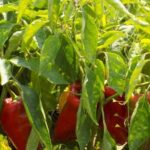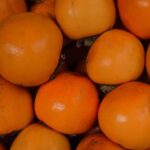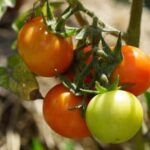Perennial vegetable gardening is a sustainable and rewarding way to cultivate a diverse range of vegetables that come back year after year. Unlike annual vegetables, which need to be replanted each season, perennial vegetables require less maintenance and can provide a continuous harvest for several years. In this article, we will explore the concept of perennial vegetable gardening and its numerous benefits for home gardeners.
One of the key advantages of perennial vegetable gardening is its potential to reduce the time and effort required for planting and maintenance. By choosing the right perennial vegetables and creating the perfect garden layout, you can enjoy a bountiful harvest with minimal input. Additionally, perennial vegetables often have extensive root systems that help improve soil structure and fertility over time, contributing to long-term sustainability in your garden.
In the following sections, we will delve into the essential aspects of perennial vegetable gardening. From selecting the best perennial vegetables to understanding soil preparation and maintenance, planting and care instructions, harvesting tips, pest management strategies, and long-term sustainability practices – this comprehensive guide will equip you with the knowledge you need to establish and maintain a thriving perennial vegetable garden.
Whether you are new to gardening or looking to diversify your existing garden, perennial vegetable gardening offers an exciting opportunity to create a more sustainable and productive growing space.
Choosing the Right Perennial Vegetables
When it comes to perennial vegetable gardening, choosing the right vegetables is crucial for a successful and sustainable garden. Here are some tips on selecting the best perennial vegetables for your garden:
- Consider Your Climate: Different perennial vegetables thrive in different climate zones. Be sure to choose vegetables that are suitable for the climate in your area to ensure they will grow well.
- Evaluate Your Soil: Before selecting perennial vegetables, it’s important to understand the quality of your soil. Some vegetables may require specific soil conditions, so it’s essential to choose varieties that are compatible with your soil type.
- Assess Your Garden Space: Take into account the amount of space you have available for gardening. Some perennial vegetables, such as asparagus and rhubarb, require more space to grow, while others can thrive in smaller areas.
In addition to these tips, it’s also helpful to research the nutritional value and culinary uses of different perennial vegetables. This can help you select varieties that not only grow well in your garden but also provide you with a diverse range of flavors and nutrients.
Remember that choosing the right perennial vegetables is just the first step in creating a thriving garden. Proper care, maintenance, and attention to soil quality are also essential for the long-term success of your perennial vegetable garden. By carefully selecting the best perennial vegetables for your garden, you can enjoy a bountiful harvest year after year while promoting sustainability and biodiversity in your garden ecosystem.
Creating the Perfect Garden Layout
When it comes to creating the perfect garden layout for perennial vegetable gardening, there are a few key factors to consider in order to ensure the success of your garden. From maximizing space and sunlight to efficient watering systems, designing a layout that works well for perennial vegetable gardening is essential for a thriving garden.
Maximizing Space
One of the first steps in creating the perfect garden layout for perennial vegetable gardening is maximizing the available space. Perennial vegetables often require ample room to spread out and grow, so it’s important to plan the layout accordingly. Consider vertical gardening techniques, such as trellises or vertical planters, to make the most of limited space and allow your perennial vegetables to thrive.
Sunlight and Watering Systems
Another crucial aspect of designing a successful garden layout for perennial vegetable gardening is ensuring adequate sunlight and efficient watering systems. Before planting, assess how much sunlight different areas of your garden receive throughout the day and plan accordingly. Additionally, consider incorporating drip irrigation or soaker hoses to provide consistent moisture to your perennial vegetables without wasting water.
Companion Planting
When designing a layout for perennial vegetable gardening, it’s beneficial to incorporate companion planting strategies. By planting compatible species together, you can promote natural pest control, improve soil quality, and increase overall productivity in your garden. Research which perennial vegetables complement each other well and plan your garden layout accordingly.
By carefully considering space utilization, sunlight exposure, watering systems, and companion planting techniques when designing your garden layout for perennial vegetable gardening, you can set yourself up for a successful and flourishing garden ecosystem. These considerations will help ensure that your perennials thrive year after year, providing you with an abundant harvest of delicious homegrown produce.
Soil Preparation and Maintenance
When it comes to perennial vegetable gardening, soil preparation and maintenance are essential for the success of your garden. Proper soil quality and maintenance are crucial to ensure optimum growth and productivity of your perennial vegetables. Here are some tips on understanding the importance of soil quality and how to maintain it for your garden:
1. Soil Testing: Before planting any perennial vegetables, it’s important to test the soil to determine its pH level, nutrient content, and overall health. You can purchase a DIY soil testing kit or send a sample to a professional lab for analysis. Based on the results, you can make necessary amendments to improve the soil quality.
2. Adding Organic Matter: Incorporating organic matter such as compost, aged manure, or leaf mold into the soil is essential for providing nutrients, improving drainage, and enhancing microbial activity. This helps create a healthy environment for root development and overall plant growth.
3. Mulching: Applying a layer of organic mulch around your perennial vegetables helps retain moisture, suppresses weed growth, regulates soil temperature, and adds valuable organic matter as it decomposes. This also helps prevent erosion and compaction while providing habitat for beneficial organisms.
4. Crop Rotation: Practice crop rotation in your perennial vegetable garden to prevent depletion of nutrients in the soil and minimize disease build-up. By rotating different types of vegetable crops each season (or every few years), you can maintain soil fertility and balance.
By understanding the importance of soil quality and following proper maintenance practices, you can create an ideal growing environment for your perennial vegetable garden that will promote healthy plants and bountiful harvests.
Planting and Care Instructions
When it comes to perennial vegetable gardening, one of the first steps is to choose the right location for planting. Most perennial vegetables thrive in well-drained soil and require full sunlight. It’s important to prepare the soil by adding organic matter such as compost or aged manure to improve its fertility and structure.
Once the soil is ready, it’s time to select the perennial vegetables you want to plant. Popular options include asparagus, rhubarb, artichokes, and various herbs like oregano and thyme.
After selecting your perennial vegetables, it’s crucial to give them proper care to ensure their growth and development. Make sure to plant them at the right depth and distance apart according to their specific requirements. Watering is also essential, especially during dry spells, as most perennial vegetables need consistent moisture. Mulching can help retain moisture in the soil and suppress weed growth around your plants.
As your perennial vegetables grow, it’s important to keep an eye on their overall health. Regularly check for any signs of pests or diseases, as early detection can prevent major issues later on. Additionally, consider providing support for certain plants that may benefit from trellising or staking. By following these planting and care instructions for perennial vegetable gardening, you can enjoy a bountiful harvest year after year.
| Perennial Vegetable | Planting Depth | Spacing |
|---|---|---|
| Asparagus | 6-8 inches deep | 18 inches apart |
| Rhubarb | Crown at surface level | 3 feet apart |
| Artichokes | 2-4 inches deep | 4-6 feet apart |
In addition to specific instructions for each type of vegetable mentioned above – detailed information related to general planting depth/spacing will be more appropriate.
GYI – 89081698
Harvesting and Storage Tips
Best Time to Harvest Perennial Vegetables
When it comes to harvesting perennial vegetables, timing is crucial. Different types of perennial vegetables have varying peak harvest times, so it’s important to know when each one is at its best for picking. As a general rule, harvest perennial vegetables when they are at their peak flavor and texture.
This usually means harvesting them before they become overripe or woody. For example, asparagus should be harvested when the spears are about 6-8 inches tall and snap peas should be picked when the pods are plump and shiny.
Harvesting Techniques
The techniques for harvesting perennial vegetables can vary depending on the type of vegetable. Some, like rhubarb, can be simply pulled from the ground while others, like artichokes, require careful cutting with a sharp knife. It’s important to research the specific harvesting techniques for each type of perennial vegetable you are growing in order to maximize yield and quality.
Storage Best Practices
Once harvested, proper storage is essential to keep your perennial vegetables fresh and flavorful for as long as possible. Whether you plan to eat them right away or save them for later use, certain storage practices can extend the lifespan of your harvest.
For example, storing root vegetables like carrots and parsnips in a cool, dark place with high humidity can prolong their freshness. Leafy greens such as kale and Swiss chard benefit from being stored in perforated plastic bags in the refrigerator to maintain crispness.
Exploring various methods such as drying, fermenting, or freezing can also provide additional options for long-term storage of your perennial vegetable harvest. By incorporating these best practices into your gardening routine, you can enjoy a bountiful supply of homegrown produce throughout the year.
Dealing With Pests and Diseases
One of the challenges that gardeners face when practicing perennial vegetable gardening is dealing with pests and diseases. However, there are several strategies that can be implemented to prevent and manage these common issues.
First, it’s essential to practice good garden hygiene. This includes regularly removing any dead or decaying plant material, as well as keeping the garden area free from weeds. By doing so, you can reduce the risk of attracting pests and diseases to your perennial vegetable garden.
Another effective strategy is to encourage natural predators in your garden. This can be done by incorporating plants that attract beneficial insects such as ladybugs, lacewings, and parasitic wasps. These insects feed on common garden pests like aphids, mites, and caterpillars, helping to naturally control their populations.
In addition to promoting natural predators, choosing disease-resistant perennial vegetables can also help minimize the risk of plant infections. Many plant varieties have been bred for enhanced resistance to common diseases, providing a more robust option for your perennial vegetable garden.
| Common Pests | Preventive Measures |
|---|---|
| Aphids | Encourage ladybugs and lacewings |
| Spider Mites | Maintain proper humidity levels |
| Caterpillars | Use floating row covers for protection |
Long-Term Sustainability
In conclusion, perennial vegetable gardening offers a multitude of long-term benefits and contributes to the sustainability of a thriving garden ecosystem. By incorporating perennial vegetables into your garden, you can enjoy a continuous harvest year after year without the need for replanting. This not only saves time and effort but also promotes environmental sustainability by reducing the use of resources such as water, fertilizer, and energy.
Furthermore, perennial vegetable gardening supports biodiversity and healthy soil. The deep root systems of perennial plants help prevent soil erosion and improve soil structure, leading to better water retention and reduced runoff. This, in turn, supports a diverse range of beneficial organisms in the soil, contributing to a balanced and resilient garden ecosystem.
Overall, embracing perennial vegetable gardening is not only rewarding for the individual gardener but also contributes to larger environmental goals. By choosing the right perennial vegetables, creating an appropriate garden layout, preparing and maintaining the soil, following planting and care instructions, implementing harvesting and storage tips, and effectively managing pests and diseases, you can establish a sustainable and thriving garden ecosystem that will continue to yield bountiful harvests for years to come.
Embracing the concept of perennial vegetable gardening is a step towards creating a more sustainable future for both our gardens and the planet as a whole.
Frequently Asked Questions
What Garden Vegetables Are Perennials?
Some garden vegetables that are perennials include asparagus, rhubarb, and artichokes. These plants have the ability to survive for multiple growing seasons, often needing minimal maintenance once established.
What Vegetables Do You Have to Replant Every Year?
Many common vegetables such as tomatoes, peppers, and cucumbers need to be replanted every year. These annual vegetables complete their life cycle within a single growing season and do not regrow from the same plant the following year.
Are There Any Vegetables That Grow Year Round?
Yes, there are several vegetables that can grow year-round in the right conditions. Examples include spinach, kale, and certain varieties of lettuce that can thrive in cooler temperatures. Additionally, some root vegetables like carrots and beets can also be grown year-round with proper care and protection from harsh weather.

If you’re looking to get into vegetable gardening, or are just looking for some tips on how to make your current garden better, then you’ve come to the right place! My name is Ethel and I have been gardening for years. In this blog, I’m going to share with you some of my best tips on how to create a successful vegetable garden.





